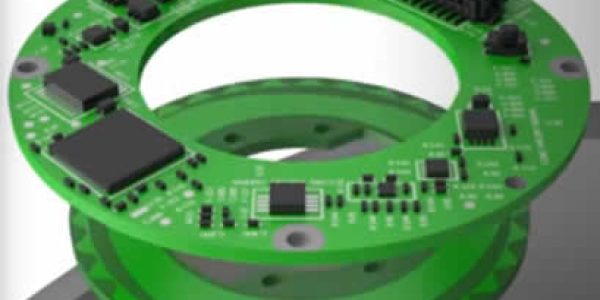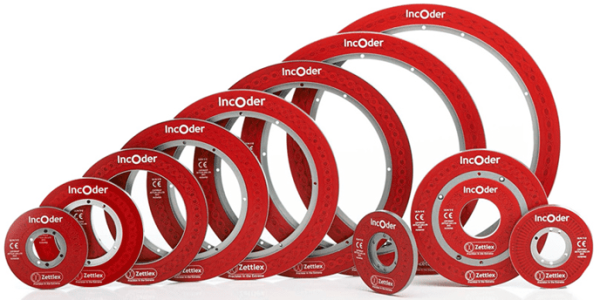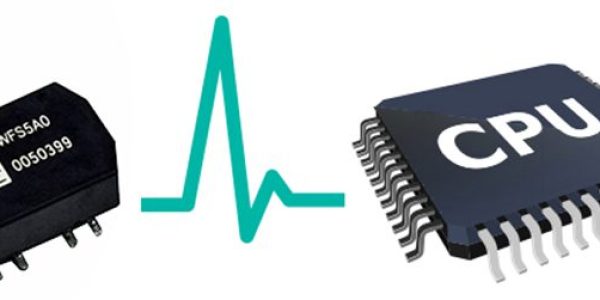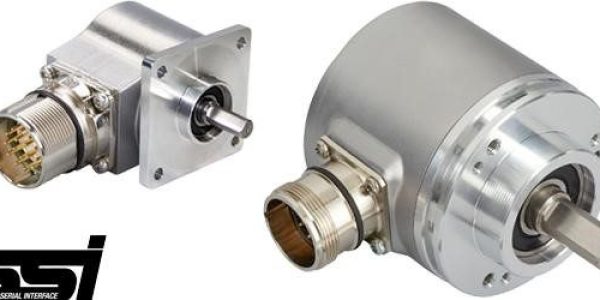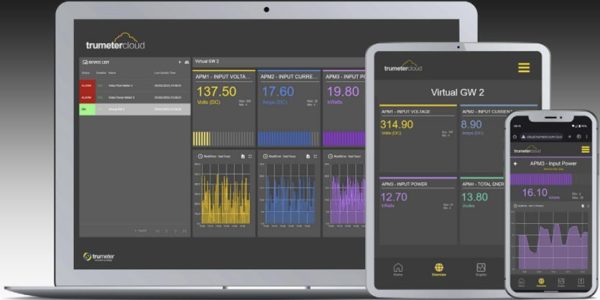The LVR sensor (Linear Variable Resonance), is a new patented non-contact linear position sensor that is a potential replacement for the LVDT sensors in harsh environments. It has better accuracy, has a smaller envelope and most important much lower temperature sensitivity than an LVDT. The LVR is a resonant circuit producing a digital frequency output. This eliminates the noise and temperature problems associated with all analog sensors.
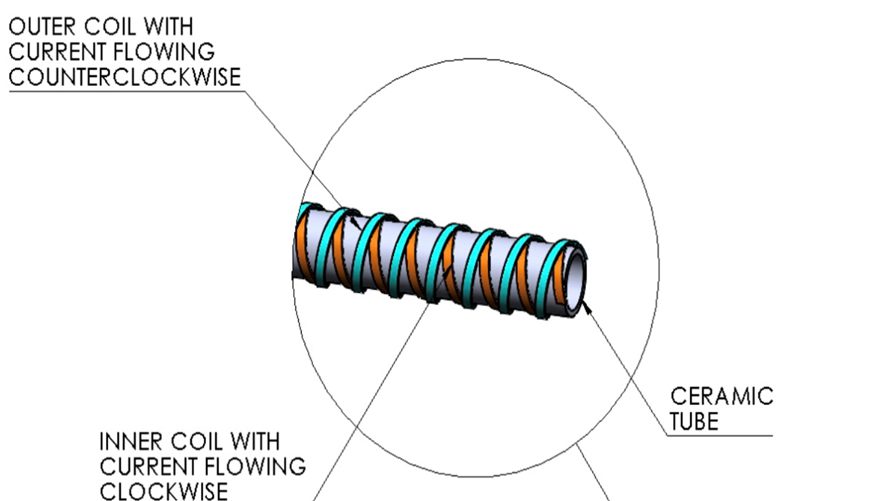
These advantages are possible due to the fundamental design of the sensor. The LVR sensor consists of a coil wound on a round ceramic tube as shown above. The initial layer of wire is wound as a helix with a large pitch. Upon reaching the end of the tube, the pitch is reversed, and a returning reverse helix is laid over the first coil. The two ends of the double coil are attached via separate cables to remote electronics, forming a resonant circuit that oscillates in the 2 – 4 MHz region. The two coils are now wired in series with current flowing clockwise in one coil and counterclockwise in the other. The magnetic field of each coil, as determined by the right-hand-rule, are parallel to the sensor but point in opposite directions and thus cancel each other. At the same time, also by the right-hand-rule”, the electric fields are perpendicular to the sensor and thus are additive. The resulting electromagnetic field outside the coil is a strong electric field with minimal magnetic component. Thus a metal rod attached to the item to be measured will change the frequency in a rapid and predictable manner.
The resonant frequency of this circuit is determined by the formula
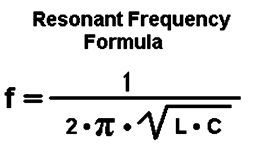
Since the resistance of the coils does not appear in equation, the large changes of resistance in copper wire with temperature does not affect the output. In experiments an output change of less than 0.1% of full scale over the range of -70 to 200C has been observed. In comparison to an LVDT which is currently the only sensor to work in these environments the LVR is superior as shown in the chart below:
|
LVR |
LVDT |
|
|
Fundamental Output Signal |
Digital |
Analog |
|
Operating Temperature |
-70 to 200 C Optional to 450 C |
-55 to 200 C |
|
Stroke to Length |
2:1 |
3:1 |
|
Resolution |
.001% FS |
.1% FS |
|
# of Wires to Electronics |
2 |
4 or 6 |
|
Accuracy (Full-scale) |
0.01% FS |
0.25%FS |
|
Temperature Sensitivity |
<3ppm C |
>50 ppm C |
|
Requires Shielding from External |
No |
Yes |
For more information on the LVR sensor contact Len Goldman lengold@evrtp.com or complete the info request below:
"*" indicates required fields
